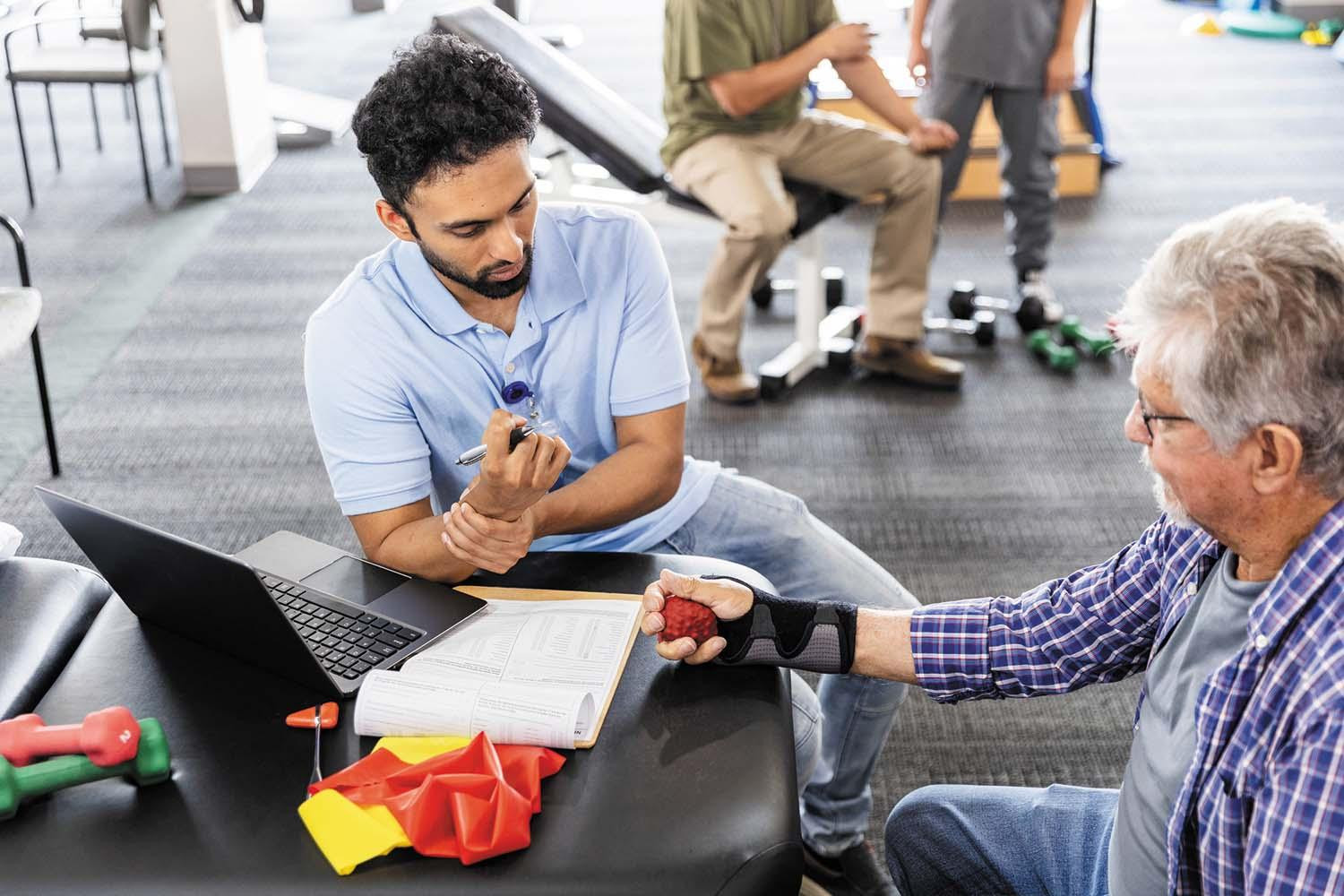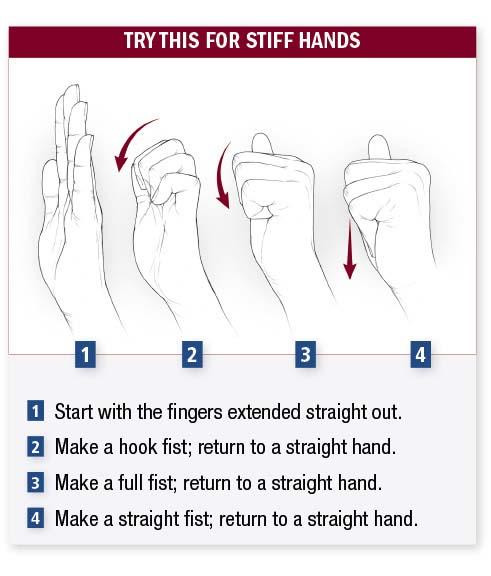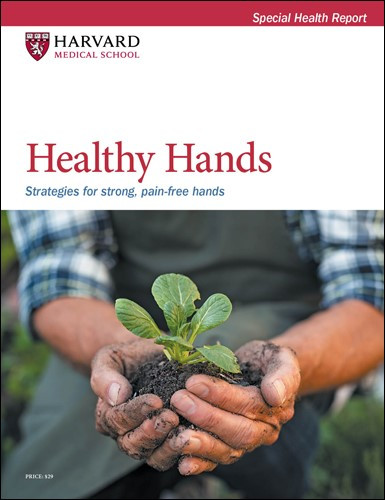What’s involved with hand therapy
Specialized therapists can help you regain the use of your hands, so you can return to the activities that matter most to you.
- Reviewed by Anthony L. Komaroff, MD, Editor in Chief, Harvard Health Letter; Editorial Advisory Board Member, Harvard Health Publishing

Sometimes aching or injured hands need more than rest, medication, or home remedies to function or recover. In that case, your doctor might recommend that you work with a certified hand therapist (CHT). If so, be prepared for comprehensive therapy that extends beyond your hand.
What is a certified hand therapist?
A CHT is an expert in rehabilitating the hand and entire arm. “We traditionally work from the shoulder to the elbow, wrist, and hand, because you can’t treat one part of the limb without it affecting the function of another,” says Betty Hearne, a CHT at Harvard-affiliated Spaulding Rehabilitation Hospital.
The specialty combines some approaches from both physical therapy (PT), which focuses on strength and physical function, and occupational therapy (OT), which focuses on modifying activities that have become challenging.
CHTs must pass a rigorous exam before earning their certification. They can’t even take the test unless they are licensed OTs or PTs with at least three years of experience and 4,000 hours of direct practice experience with hand and upper extremity rehabilitation.
Candidates for hand therapy
People seek hand therapy for any of a number of conditions. For instance:
- an underlying condition (such as arthritis)
- a hand injury of any kind
- an injury of the shoulder, elbow, or wrist
- Dupuytren’s contracture — tissue growth that pulls the fingers toward the palm
- carpal tunnel syndrome — swollen tissue that presses on a forearm nerve, causing tingling and numbness in the thumb and certain fingers.
You might have a few problems at once, such as shoulder, wrist, and hand injuries from a fall.
What happens in therapy?
A course of hand therapy typically lasts for six weeks, but could be longer or shorter depending on your needs. It involves many components.
An evaluation. The CHT will assess your pain, wound (if you have one), sensation, dexterity, ability to function, strength, and range of motion. “I’ll ask if you can open your fingers wide or make a fist, and if you have pain or swelling. We’ll talk about what you want to do, what your goals are, and what we can do to meet your goals,” Hearne says.
A tailored exercise program. “We start with painless, gentle exercises that get progressively more challenging,” Hearne says. “That could be routine strengthening exercises, such as squeezing a ball so muscles contract against resistance, or letting the shoulder dangle at your side and doing very small, relaxed circles. It just depends on the problem.”
Functional exercises. The CHT will help you tackle and modify activities that have become difficult, such as gripping a toothbrush, carrying bags, or buttoning a shirt.
Homework. The CHT will encourage you to do certain exercises at home. For example, for arthritis: “You might wring out a washcloth in warm water a couple of times a day. The warmth makes tissues feel looser, which helps relieve pain. And the wrist motion helps pump out swelling,” Hearne says. “We’ll also recommend that you use your hands for as many routine activities as possible.”
Try this for stiff hands
Illustration by Alayna Paquette/Getty Images |
Other aspects of therapy
CHTs do more than guide you through exercises. They can also do the following:
Make splints. CHTs can make a custom splint out of malleable (thermoplastic) material that holds your fingers in place so they don’t hurt, or allows you to get out of a cast safely while you do an exercise.
Manage swelling. “We may issue a compression garment like a sleeve or glove, or show someone how to do edema mobilization — a specialized massage technique that reduces swelling,” Hearne says.
Manage pain. CHTs can teach you how to relieve pain using topical medications, deep breathing exercises, and meditation. They can also guide you to adaptive equipment that makes it easier to grip or use tools.
Offer emotional support. “Many people are distraught about their impairment, and a large part of what we do is help them get through hard times. We use cognitive behavioral therapy to redirect negative thoughts. We also show them how they’re getting better by having them do certain exercises, like opening a jar. It gives them a boost and helps them overcome fear of moving their healing hand and arm,” Hearne says.
Where to find CHT
Your doctor can refer you to a CHT, or you can find a therapist in your area at the Hand Therapy Certification Commission website.
What if you don’t have a CHT in your area? Hearne says there’s nothing wrong with going to a regular occupational therapist. But if you want someone with specialized training, it’s best to work with a CHT.
CHT and OT are covered by insurance, including Medicare, if they’re medically necessary.
Don’t wait to seek help
Try to work with a therapist sooner rather than later. “The hand tends to scar as it heals, which makes tissues stick together. And if you stop using your hand for six weeks, it takes real effort to retrain the brain to use it. So we start people on therapy before they’re fully healed,” Hearne says.
Initiating gentle, controlled movement early after an injury prevents complications down the road and yields effective results. “Within six weeks, most people have 80% of their normal function back,” Hearne says, “and they’re doing more activities again — working, playing golf, cooking more, and feeling better about their ability to function.”
For more information, check out the Harvard Special Health Report Healthy Hands.
This article is brought to you by Harvard Health Online+, the trusted subscription service from Harvard Medical School. Subscribers enjoy unlimited access to our entire website, including exclusive content, tools, and features available only to members. If you're already a subscriber, you can access your library here.
Image: © SDI Productions/Getty Images
About the Author

Heidi Godman, Executive Editor, Harvard Health Letter
About the Reviewer

Anthony L. Komaroff, MD, Editor in Chief, Harvard Health Letter; Editorial Advisory Board Member, Harvard Health Publishing
Disclaimer:
As a service to our readers, Harvard Health Publishing provides access to our library of archived content. Please note the date of last review or update on all articles.
No content on this site, regardless of date, should ever be used as a substitute for direct medical advice from your doctor or other qualified clinician.

















